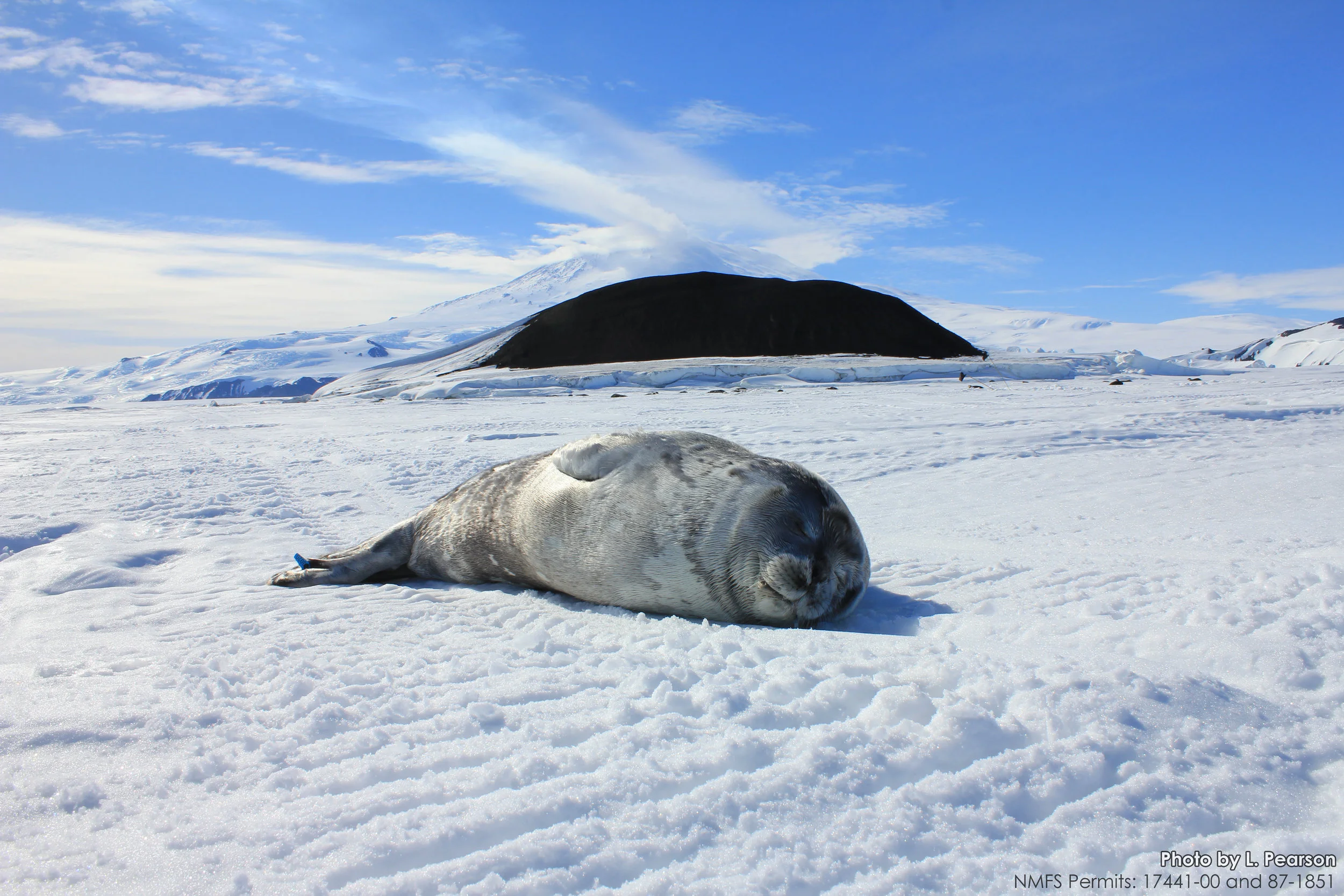Weddell seals are one of the best studied seals in the world, and they are amazingly well adapted to the extreme Antarctic environment. They have a large body size and thick blubber layer help them to stay warm both on and under the ice. Their streamlined shape, oxygen stores in blood and muscle, and collapsible lungs allow them to reach dive depths of 600 meters (almost 2,000 feet!) and remain under water for over an hour.
But Weddell seal pups are not born with these abilities. They begin their lives on the sea ice with a small body size and almost no blubber! They are born with relatively low oxygen stores and must develop their diving capacity and skills. They rely entirely on the energy from their mother’s milk, both to stay warm and to become good divers. With only so much energy available, they have to find the balance that will allow them to not only survive out on the ice but also develop the ability to get their own food beneath the ice.
The question is: What does it take for a Weddell seal pup to survive and successfully make the transition between two extreme environments – above and below the Antarctic sea ice – in only a matter of weeks? To answer this, Cal Poly scientists and a marine mammal veterinarian venture to Antarctica to study the development of thermoregulation and diving in Weddell seals.
All research on this website was authorized under NMFS Permit # 21006. Photos were taken under NMFS Permits 17441-00, 87-1851, and 21006. This material is based upon work supported by the National Science Foundation under Grant Number 1543539. Any opinions, findings, and conclusions or recommendations expressed in this material are those of the author(s) and do not necessarily reflect the views of the National Science Foundation.

